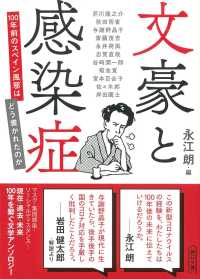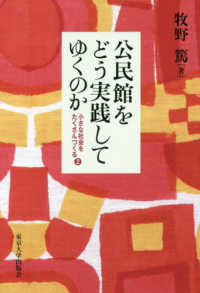基本説明
Provides hads-on experiments in nuclear radiations and discusses their interactions with matter, detection and measurement.
Full Description
Experiments in Nuclear Science is an introductory-level laboratory manual providing hands-on opportunities for developing insights into the origins and properties of nuclear radiations, their interactions with matter, their detection and measurement, and their applications in the physical and life sciences. Based on experiments successfully performed by hundreds of students at Rutgers University and the University of Wisconsin, this manual can be used as a stand-alone volume or alongside a textbook such as Introduction to Nuclear Science by Jeff C. Bryan.
Relevant to a range of courses
Each of the 32 exercises includes an overview of the scientific phenomenon, instructions for conducting the experiments and recording the data, directions for analyzing the data and reporting the results, specific questions relating to the experiments, and several problems relating to the scientific phenomena being investigated. Validated for safety and pedagogy in the undergraduate instructional laboratory, the exercises can be used in an undergraduate course in nuclear science. Individual exercises can also be adopted to demonstrate fundamental principles in a general science course as well as introductory biology and chemistry courses. Making use of off-the-shelf instrumentation, these exercises can be performed in a conventional laboratory under the supervision of an experienced instructor.
Applicable to numerous career fields
Demonstrating fundamental principles, the concepts explored through these experiments are relevant to a host of career opportunities, including those in the health sciences, the nuclear power industry, regulatory agencies, and waste management services.
Contents
Characteristics of Geiger-Muller Counters. Resolving Time. Background Corrections. Inverse Square Law. Corrections for Geometry Factors. Back Scatter of Radiation. Corrections for Self-absorption. Range of Beta Radiations. Absorption of Beta Radiation. Absorption of Gamma Radiation. Radioactive Decay and Instrument Efficiency. Half-life Determination. Investigation of Two Independently Decaying Radionuclides. Half-life of a Long-lived Radionuclide. Autoradiography. Calibration and Operation of the Electroscope. Properties of Proportional Counters. Integral Spectra. Gamma Spectrometry Liquid Scintillation Counting. Separation by Precipitation. Chromatographic Separation. Random Errors. Duplicate Samples. Measurement of Neutron Flux. Neutron Activation Analysis. Hot Atom Chemistry. Synthesis of 14C Aspirin. Synthesis of 35S-Sulfanilamide. Radiological Monitoring. Determination of an Unknown. Appendices.






